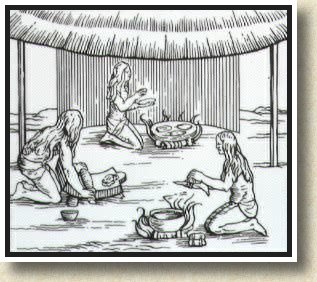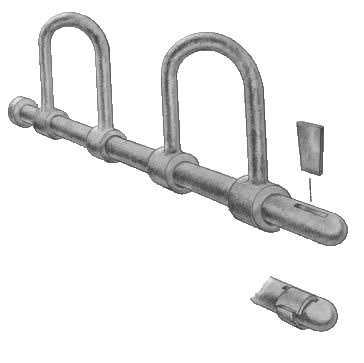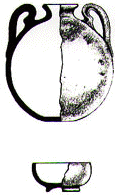 |
 |
| The fragments of European pottery on board are typical of types made in Spain and Portugal during the late 15th and early 16th centuries: "olive jars," escudillas (bowls), and lebrillos (basins). Because the Portuguese were not in these waters at that time, the ship was almost certainly Spanish. |
|
|
Illustrations by O. Castro |
 |
A people known as the Lucayan Tainos inhabited the Bahama and Turks and Caicos Islands when Columbus arrived in 1492. Within the first 20 years of European contact, disease and slaving forays had virtually eliminated these people. There is no precise date for the Lucayan Tainos’ extinction, but Ponce de León reported encountering only one Indian when he passed through the Bahamas in 1513 on his way to "discovering" Florida. |
| The location of the Molasses Reef wreck is an important clue to the ship's mission and identity. The first Spanish colonies in the New World were located along the north coast of the island of Hispaniola; Molasses Reef lies directly between them and the open sea. Early maps show that Spanish navigators knew the location of—and had often visited—the Turks and Caicos Islands. The purpose of such voyages was to capture Indians to work in the mines and fields of Spanish Hispaniola. Was the ship that came to grief on Molasses Reef engaged in this heinous enterprise? | |
 |
The evidence is still circumstantial, but the case is growing: Several sets of leg irons, some of them locked, were probably part of the ship's normal complement of disciplinary gear, or were used to immobilize captives.
|
| The absence of trade goods or any evidence of cargo implies that whatever the ship was carrying floated off or disintegrated completely. The absence of personal items and navigational equipment indicates that most of the crew survived the wreck and managed an orderly abandonment of their vessel. | |
More Ships of Discovery shipwreck sites |
Ships
| Exploration | Discovery
| Research | Our Mission
Headquarters | Exhibits |
Turks and Caicos Museum | About
Us | Our Network | Contributors
|| Underwater Links
| Our Publications
Shipwreck Excavations | Columbus's
Lost Ships | Archival Documents | Conservation
| Ancient Techniques | Replicas
Experimental Archaeology
